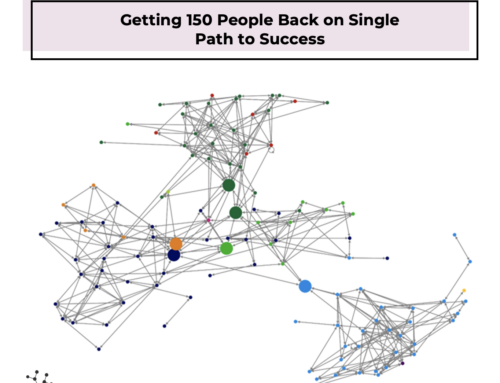The Right Thing to Do in a Hybrid Work Environment
The rise of hybrid work has led leadership to question how to organize for high performance while balancing priorities such as well-being, connectivity, networks, and innovation. Gut feelings are no longer enough; evidence is needed to guide decision-making and design effective strategies in the hybrid work landscape. As Ethan S Bernstein, Associate Professor of Business Administration at Harvard Business School, puts it in his own words in the article Back To Office? Stay Remote? Go Hybrid?: “It would help if we started by asking what we are optimizing for and then put our minds together to solve for that. Right now, some organizations seem to be falling into the consensus trap: We don’t know what to do, so let’s strike a middle ground and do two to three days in the office.”
Achieve Success with Hybrid Work: Evidence-Based Strategies
Innovisor has put together its unique network and change tools, technologies, and frameworks in a dedicated Hybrid Work Solution. We at Innovisor perceive the hybrid work setup, namely, as any other change initiative: success and acceptance of this new work environment will only occur when it makes sense to the people involved!
Putting Evidence-based Hybrid Strategy into Action: How a 150-Employee Organization Flourished with Hybrid Work
The top leader of 150 employees was concerned with their team’s connectivity and collaboration. Like many other organizations, the pandemic forced their work to be completely remote. Over the past two years, there has been a transition to a hybrid work model. There were varying schedules and the absence of a company-wide mandate. This flexibility raised concerns from the top leaders about maintaining effective connectivity and collaboration among team members.
Without a comprehensive understanding of the new work environment, employees felt disconnected from their colleagues, leading to potential communication gaps and reduced collaboration. To address these concerns, the organization enlisted the help of Innovisor’s Hybrid Work Solution.
Two Hybrid Work Actions: Mitigating Manager Reliance and Enhancing Cross-Functional Collaboration
The first eye-opener was that not only formal collaboration but also informal connections and innovation networks were driven by those who had the formal responsibility to lead others: the managers. Within this organization’s self-directed hybrid work model, networks have become centralized around managers.
Innovisor’s benchmarking on collaboration following the discernible changes in work environments reveals that there has been a significant decrease in the number of relationships, while the reliance on management – those with formal leadership responsibility – has experienced a notable surge.
The second eye-opener was that employees lacked a clear understanding of their colleagues’ roles and competencies. This lack of knowledge led to a hierarchical shift in the networking and communication lines within the organization. Employees relied more heavily on their immediate managers for guidance, as they were unsure about whom to approach for specific tasks or expertise.
The leader recognized the need for immediate action due to the increased dependency on managers for communication and guidance. This had the potential to result in unintended consequences, such as bottlenecks or delays in decision-making. Addressing this issue was therefore paramount and at the same time, the hierarchical shift in networks would help facilitate the free flow of information and enhance cross-functional collaboration.
A Change Initiative Approach for Hybrid Work Success
The Hybrid Work Solution helps organizations treat hybrid work as a change initiative. In the case of this organization, the change is to foster a more connected and collaborative hybrid work environment.
The recommended actions resulting from this solution helped the leader not to push for action alone. Backed with this evidence of what was invisible to her before, she also got to know what the specific drivers were of connectivity and whom she needed to engage with to succeed. For example, the Innovisor Connector Algorithm found employee connectors across the organization to bring together. These employee connectors were highly connected in their own tribes or silos. By bringing them together on cross-organizational projects, they got the know each other better and their roles and responsibilities – which had a ripple effect in the rest of their tribes or silos. This helped with the mitigation of manager reliance, and enhancing of cross-functional collaboration.

Through making the invisible visible, and treating hybrid work as a change initiative, this leader was able to become laser-focused in changing the hybrid work model for the optimization of the connectivity of her organization!








